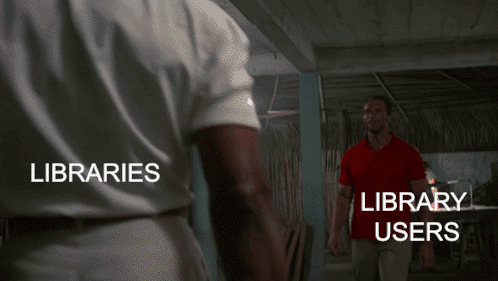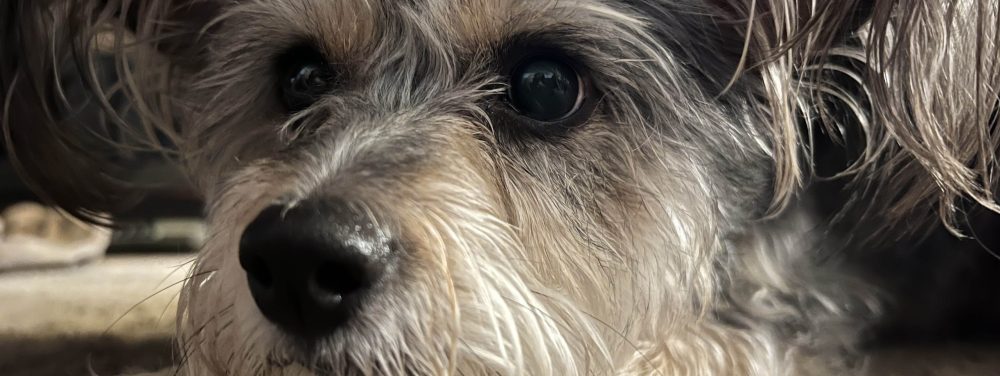
If the hyperlinked Library model is “built on human connections and conversations” (Stephens, 2011), then participatory service is key to accomplishing this goal. In Revisiting Participatory Service in Trying Times, Michael Casey (2011) argues that the Participatory Library communicates openly with its community, involving them in brainstorming, planning for new ideas and services, and including them in the evaluation and review process. In essence, libraries should seek engagement with their community, not just for basic input (‘how’s my driving’ sort of input), but genuine, from-the-heart involvement that encourages learning (Stephens, 2011).
Fundamentally, participatory service is a rewarding venture for both parties involved. Providing a service that ensures library users gain something every time they contribute to their community is a win-win. Libraries can hone this rewarding quality of participatory venture and create actual strides for community involvement. One area that particularly caught my attention and prompted me to explore the topic of participatory service is the involvement of the community in special collections within libraries. The quirky, hilarious, but very informative presentation on How to Destroy Special Collections with Social Media by Sarah Werner (2015) discusses the impact of social media on public access to special collections. Werner (2015) argues that while social media can help promote and increase the visibility of libraries and their collections, these organizations often make it challenging for users to access and share their content. For instance, the Vatican’s digitized collections can be viewed, but sharing them may violate copyright laws; even if permission is granted for non-commercial use, sharing requires proper citation, which can be cumbersome on social media platforms (Werner, 2015). I recognize the validity of both viewpoints: the significance of safeguarding images from misuse and the importance of users being able to access this information. However, I appreciate what Lisa Carter states in her 2009 It’s the Collections That Are Special article:
“As professionals working in libraries with special collections and archives, exposing our singular collections is our unique contribution to the broader world of knowledge. We must do this in the context of trends in the field, including enhancing teaching and learning, increasing efficiency and productivity in creating access, and seizing opportunities presented by technology” (Carter, 2009).
Exposing such unique collections can be especially valuable within public libraries that serve diverse communities, as it has the potential to encourage greater engagement and interest in the library’s offerings. Carter goes on to say:
“Information seeking is personal… A public library can connect materials about the immigrants’ lives in the 1900s with the situation of modern-day migrant workers’ families in their community. Primary sources and other research materials from special collections can get learners thinking critically about how a source relates to their own information-seeking (and generating) behavior” (Carter, 2009).
Her example of connecting historical materials to illuminate present-day situations resonated with me. It highlighted the importance of participatory service in the development, sustainability, and overall effectiveness of a library in serving its community. For example, one avenue is getting the community involved in contributing to, interacting with, and exploring collections about their local town’s history at their local library. Ensuring these materials are digitally preserved and stay in one place for future generations to enjoy. There is beauty and joy in this kind of initiative.
I’m glad to see that some information organizations are already taking steps toward involving such projects. A great example I recently came across is the Community Album project at the Allen County Public Library in Fort Wayne, Indiana. This innovative project invites community members to bring in their images and related information to be digitally uploaded and shared, fostering a sense of inclusion and active participation (Jenner, 2024). The resulting collection is easily accessible both within the library premises and beyond, enabling broader community engagement with local history (Allen et al., 2024).
The idea of building a connection with the community through a project that enables people to actively participate in preserving their own history is truly praiseworthy. This approach not only allows for the preservation of important heritage but also strengthens community ties and fosters a sense of ownership and pride among its members. By actively involving the community in preserving its own history, the project can ensure that the narratives and experiences of the people are accurately represented and cherished for generations to come.
Side Note: The Allen County Public Library has incredible resources. They have an impressive genealogy center and an in-house TV and radio station! Check out this article by Jennie Renner for more information: https://www.inputfortwayne.com/features/ACPL-4yearplan.aspx
References:
Allen County Public Library. (2024, September 8). Community Album. http://contentdm.acpl.lib.in.us
Carter, L. (2009). It’s the collections that are special. In the Library with the Lead Pipe. https://www.inthelibrarywiththeleadpipe.org/2009/its-the-collections-that-are-special/
Casey, M. (2011). Revisiting participatory service in trying times. Tame the Web. https://tametheweb.com/2011/10/20/revisiting-participatory-service-in-trying-times-a-ttw-guest-post-by-michael-casey/
Renner, J. (2024). How the Allen County Public Library is innovating for the future while cherishing library traditions. Input Fort Wayne. https://www.inputfortwayne.com/features/ACPL-4yearplan.aspx
Stephens, M. (2011). The Hyperlinked Library: A TTW white paper. Tame the Web. https://tametheweb.com/2011/02/21/hyperlinkedlibrary2011/
Werner, S. (2015). How to destroy special collections with social media. https://sarahwerner.net/blog/2015/07/how-to-destroy-special-collections-with-social-media/

Monica, I love this special collections-centered view of participatory service. Local history really is an area that people get excited about having a part in sharing, so it’s potentially a great way for any library to build community!
Hi @terribeth
Thank you for your reply! Once I read “How to Destroy Special Collections with Social Media” by Sarah Werner, I knew I had to write about participatory service. I totally agree with you that local history can be a great avenue for a community to engage with its libraries. To get the chance to be part of history? Sign me up! 🙂
Hi Monica,
Thanks for this interesting post. The Vatican collection seems like a missed opportunity — they’ve dismantled barriers to access but not to sharing. A great initiative along these lines is the Riksstudio (https://www.rijksmuseum.nl/en/rijksstudio/?ii=4&p=1&from=2024-09-20T15%3A43%3A50.1080201Z) from the Rijksmuseum in Amsterdam (a great museum by the way (and the one in the picture of the kids on their phones (they’re looking at the Rembrandt’s Nightwatch))). Here’s an explanation of the program: https://mw2013.museumsandtheweb.com/paper/rijksstudio-make-your-own-masterpiece/index.html
Cheers!
Arthur
Hi @arthurkolat
Thank you for the reply and for the links. I appreciate it.
The Rijksmuseum is on my to-do list, I would love to visit it one day. But the impressive and mind-blowing online Riksstudio collection will have to do for now, haha.
Also, I had no idea that the Rijksmuseum had invited the public to create their own masterpieces using their online collection. I love these type of projects.
Thanks again for your reply!
@msandoval Yay for Fort Wayne! Allen County PL has long done some incredible things with collections and services. Love the graphic that opens your post too.